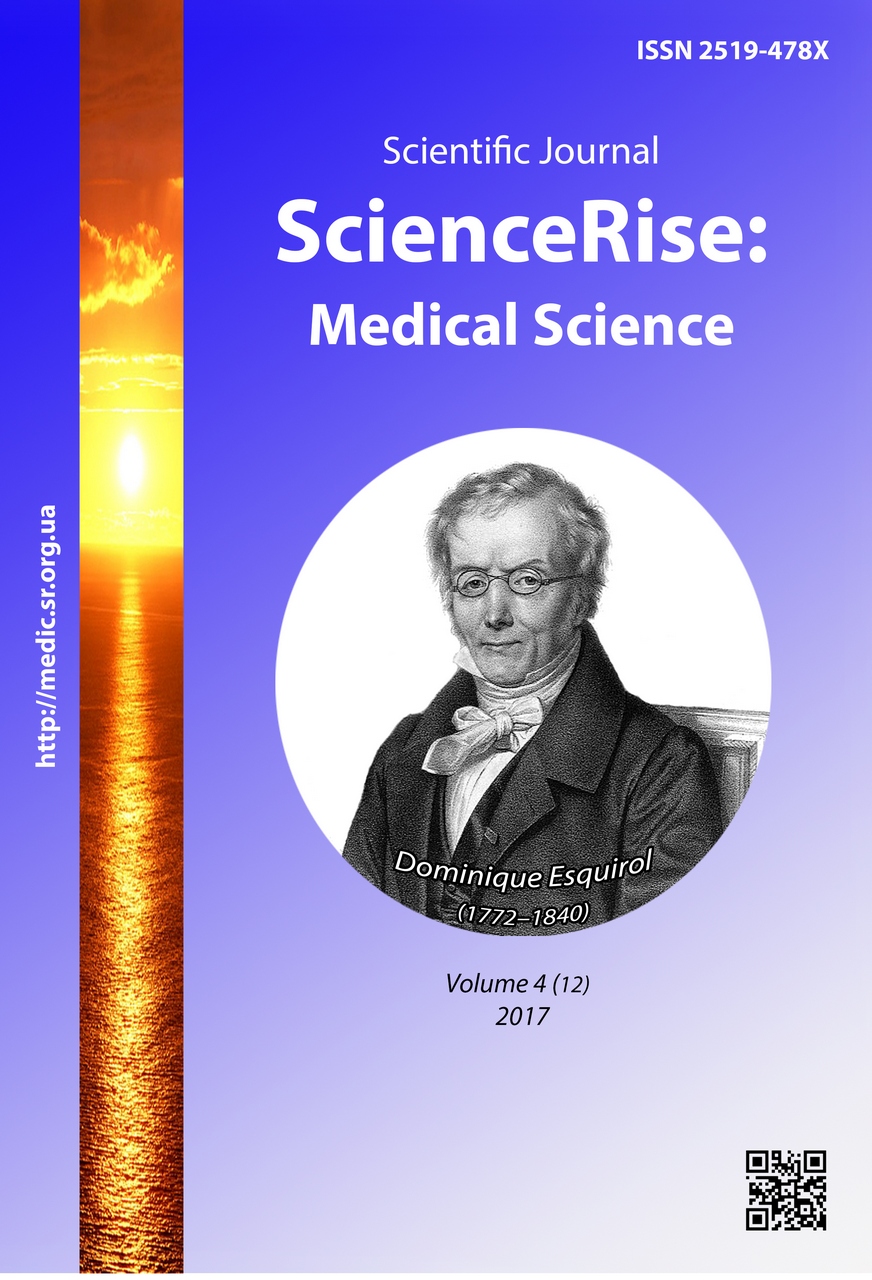Порушення соціального функціонування у хворих на параноїдну шизофренію з супутньою сомато-неврологічною патологією
DOI:
https://doi.org/10.15587/2519-4798.2017.100553Ключові слова:
параноїдна шизофренія, стресостійкість, динаміка рівню якість життя, сомато-неврологічна патологія, фармакотерапіяАнотація
Досліджений рівень стресостійкості у хворих на параноїдну шизофренію з супутньою сомато-неврологічною патологією та рівень якості життя як предиктори формування їх соціальної дезадаптації. Розглянутий вплив сомато-неврологічної патології на перебіг параноїдної шизофренії при різному рівні стресостійкості. Це дасть можливість на етапі загострень враховувати ці фактори при призначені фармакотерапії та подальшому етапі реабілітації
Посилання
- Drobizhev, M. Yu. (2000). Nosogenic (psychogenic) reactions in somatic diseases. Moscow, 38.
- Bushe, C. J., Taylor, M., Haukka, J. (2010). Review: Mortality in schizophrenia: a measurable clinical endpoint. Journal of Psychopharmacology, 24 (4), 17–25. doi: 10.1177/1359786810382468
- Dinan, T. G. (2004). Stress and the genesis of diabetes mellitus in schizophrenia. The British Journal of Psychiatry, 184 (47), s72–s75. doi: 10.1192/bjp.184.47.s72
- Herold, R. (2012). The long-term treatment of schizophrenia. Orvosi Hetilap, 153 (26), 1007–1012. doi: 10.1556/oh.2012.29416
- Nasrallah, H. A., Meyer, J. M., Goff, D. C., McEvoy, J. P., Davis, S. M., Stroup, T. S., Lieberman, J. A. (2006). Low rates of treatment for hypertension, dyslipidemia and diabetes in schizophrenia: Data from the CATIE schizophrenia trial sample at baseline. Schizophrenia Research, 86 (1-3), 15–22. doi: 10.1016/j.schres.2006.06.026
- Insel, T. R., Scolnick, E. M. (2006). Cure therapeutics and strategic prevention: raising the bar for mental health research. Molecular Psychiatry, 11 (1), 11–17. doi: 10.1038/sj.mp.4001777
- Neznanov, H. G., Martynikhin, I. A., Sokolyan, N. A., Tanyanskii, D. A. (2009). The frequency and nature of metabolic disorders in patients with schizophrenia. Obozr. Psychiatrist and honey. Psychol. them. V. M. Bechterew, 2, 17–20.
- Vasyuk, Yu. A., Dovzhenko, T. V., Shkolnik, E. L. (2007). Peculiarities of the pathogenetic relationship between depression and cardiovascular diseases. Psih, ra-va in general medicine, 2 (1), 14–19.
- Brown, S., Birtwistle, J., Roe, L., Thompson, C. (1999). The unhealthy lifestyle of people with schizophrenia. Psychological Medicine, 29 (3), 697–701. doi: 10.1017/s0033291798008186
- Nuller, Yu. L., Tsirkin, S. Yu. (Eds.) (1994). International Classification of Diseases: (10th revision). (1994) Classification of mental and behavioral disorders: Clinical descriptions and guidelines for diagnostics. Saint-Petersburg: AFIS, 302.
- Novik, A. A., Ionova, T. I. (2007). Guide to the study of the quality of life in medicine. Moscow: ZAO OLMA Media Group, 320.
- Kapponi, V., Novaka, T. (1994). Self psychologist. Saint-Petersburg: Peter, 350.
- Smashna, O. Ye. (2011). Influence of concomitant somatic pathology on estimation of quality of living by patients with paranoid form of schizophrenia. Journal Ukrainian psychoneurology, 19 (3 (68)), 70–73.
##submission.downloads##
Опубліковано
Як цитувати
Номер
Розділ
Ліцензія
Авторське право (c) 2017 Valerii Pidkorytov, Natalia Baibarak

Ця робота ліцензується відповідно до Creative Commons Attribution 4.0 International License.
Наше видання використовує положення про авторські права Creative Commons CC BY для журналів відкритого доступу.
Автори, які публікуються у цьому журналі, погоджуються з наступними умовами:
1. Автори залишають за собою право на авторство своєї роботи та передають журналу право першої публікації цієї роботи на умовах ліцензії Creative Commons CC BY, котра дозволяє іншим особам вільно розповсюджувати опубліковану роботу з обов'язковим посиланням на авторів оригінальної роботи та першу публікацію роботи у цьому журналі.
2. Автори мають право укладати самостійні додаткові угоди щодо неексклюзивного розповсюдження роботи у тому вигляді, в якому вона була опублікована цим журналом (наприклад, розміщувати роботу в електронному сховищі установи або публікувати у складі монографії), за умови збереження посилання на першу публікацію роботи у цьому журналі.










